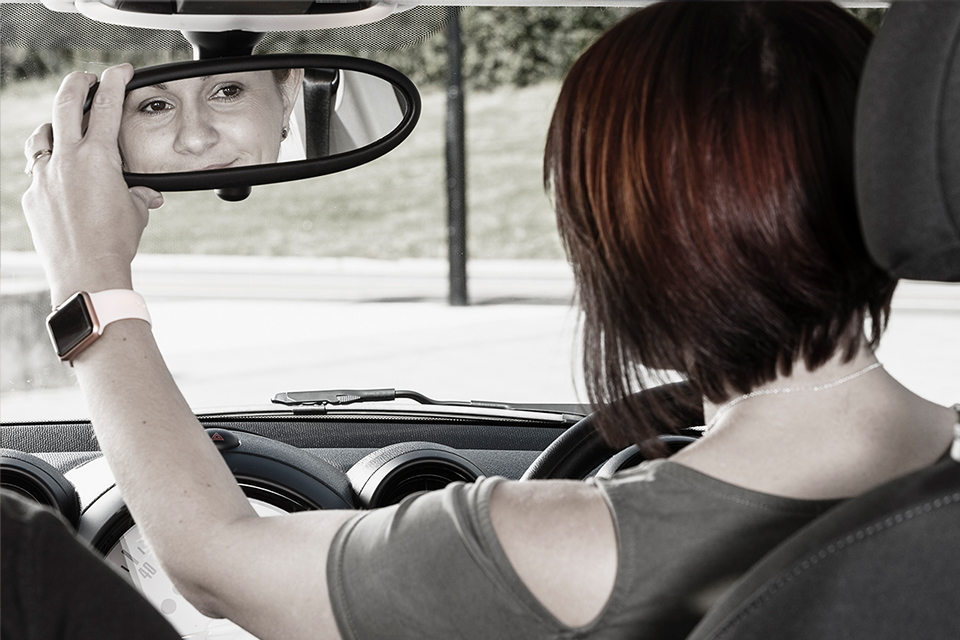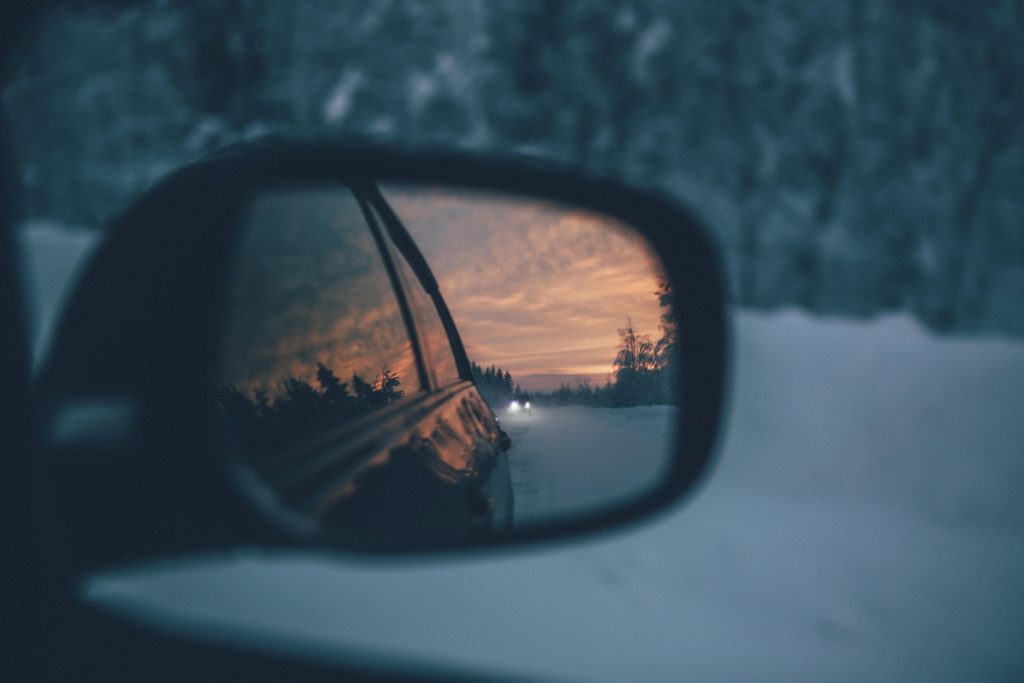When it comes to driving, you won’t be able to get anywhere without using your mirrors—and if they’re not adequately set up, you’ll run into problems further down the line, which is why, in this guide, we’re going to walk you through all of the steps needed to properly set up your car mirrors.
Setting up your interior mirror

Before you start messing about with your side mirrors, you’ve first got to set up your interior mirror, otherwise known as the rear-view mirror. Fortunately, it won’t require you to locate any buttons or switches—it’s a completely manual process.
Sit correctly
– Your rear-view mirror is what will give you a full view of the road behind you—enabling you to see if anyone’s tailgating you, and giving you the opportunity to figure out how your actions might affect other road users.
– Before you start adjusting it, however, you’ve first got to sit back in your car seat as though you’re almost ready to start driving that very second.
– You want to set up your car mirrors to suit the position that you’re sitting in. There’s no use sorting it all out when you’re perched on the edge of your seat if you’re going to be sitting further back normally, is there?
Start to adjust
– Grab the rear-view mirror by its corner. Take care to only touch the plastic, not the actual mirror (if you do smear it, clean it carefully). Keep your eyes on the mirror as you start making adjustments.
– The rear-view mirror is there so that you can quickly glance in it as you drive to keep an eye on the road behind you. As such, it needs to give you a full view out of the rear window.
– Start by moving it to one side slowly. You will need to keep moving it until you have a full view of the rear window—there should be an equal view on both sides of the mirror.
– Essentially, you want to see more of the outside in the mirror than the inside of the car. Once you’ve finished, you should be able to assess the road behind you without having to turn your head to look.
Make additional changes
– As with anything else you need to set up in your car, there are a couple of additional changes that you might need to make to your mirrors depending on the situation on the road, and your own preferences.
– If you’re driving at night, you’ll want to turn on the night-view setting to avoid the glare from the car lights behind you. There will usually be some kind of button underneath the rear-view mirror for you to switch on. Once you’ve done this, it will help reduce the glare.
– If you’re over 6 foot, you might want to adjust the rear-view mirror so that it’s upside down. This will put the wider section of the mirror at the top, reducing any blindspots that tall drivers have to deal with.
Setting up your exterior mirrors

Next on the agenda is setting up your exterior mirrors. These are otherwise known as wing mirrors, or side mirrors. Again, as with your rear-view mirror, you do not want to get onto the road without properly setting these up.
Figure out the controls
– In order to adjust the position of your side mirrors, you’ve first got to figure out what kind of controls you’re dealing with.
– Most cars nowadays come with electronic controls—allowing you to make adjustments with simple buttons. You’ll usually find these electronic controls right on the driver’s side door.
– Usually, you’ll have one button that will indicate which mirror you’re adjusting, and then a separate one with arrows pointing up, down, left and right—enabling you to adjust the position and angle.
– If your car’s a bit more old school, however, you might be dealing with a joystick that you’ll have to control manually. Or, you might even have to physically move the mirrors themselves.
Right side mirror
– When adjusting the side mirrors, you should always start with the driver’s side first. Again, as mentioned earlier, make sure to position yourself as you would if you were driving.
– Next, start to move your right side mirror using the buttons or lever. You want to begin with the position of the mirror, before moving onto the angle.
– You’ll want to move the mirror so that you can only see a small section of your car. If you can see too much of your car in the mirror, then it needs to be moved further out. If you can’t see your car at all, you need to move the mirror back in.
– Next, adjust the angle of the mirror. The aim here is to adjust it until the horizon (the point in which the distant road disappears) is in the centre of the mirror. If you get it right, the view will be flat instead of angled.
Left side mirror
– As with the setting up of the right side mirror, you’ll want to sit properly in your car seat, as you would when driving.
– For the most part, you’ll want to follow the same steps used as when adjusting the right side mirror. Continue to move the mirror until you can see most of the road, and a part of the actual car.
– The only thing that will be different is the angle of the left side mirror. You’ll want to adjust it so that it’s slightly lower than your right side one. Why? It will give you a better look at the kerb for when you’re pulling over or completing a manoeuvre.
– Obviously, you’ll want to make sure that the mirror isn’t angled too low, otherwise you’ll end up with a poor view of the road.
Blindspots
Once you’ve properly set up your car mirrors, you should have a good view of everything around your car. This will enable you to keep an eye on other motorists, pedestrians and cyclists.
Of course, no matter how much you adjust your mirrors, you’re still going to have blindspots over your left and right shoulders. This means that before you make any turns, or complete any manoeuvres, you need to check over your shoulder(s) first.
When you want to get out of your car, you should use the Dutch Reach method to make sure there aren’t any unexpected pedestrians or cyclists heading your way. This means opening the car door with the hand that’s furthest from the door—forcing you to turn your entire body and check the blindspot over your shoulder.
Remember, if you end up changing your car seat position at any point, you will need to go through these steps again to make sure that your car mirrors are positioned correctly. If you only notice that their positions are off once you’re on the move, pull over safely and adjust them accordingly.
